You Need to Know about Areal Flood
Let’s begin with some basic questions about the arial flood. What is an areal flood watch mean? What is the meaning of areal flooding? Areal flooding refers to the inundation of a relatively large area or region by an excessive amount of water, often caused by heavy rainfall, snowmelt, or other natural factors. It results in the widespread submersion of land, making it distinct from localized or river-specific flooding. What does areal stand for?

“Areal” is not an acronym; it is a term used to describe the extent or spatial distribution of something over an area, typically referring to geographical or environmental phenomena.
What’s the difference between a flash flood and areal flood? The primary difference between a flash flood and an areal flood lies in their speed of onset and the scale of the affected area. A flash flood occurs suddenly, often within minutes or hours of intense rainfall or other factors, and typically impacts a small, localized area like a canyon or urban street.
In contrast, areal flooding covers a larger geographical area, takes longer to develop, and is usually associated with more extended periods of precipitation or widespread factors like snowmelt. What are the types of flood? Floods can be categorized into various types, including river floods, coastal floods, flash floods, and areal floods. These categories are based on the primary causes and geographical locations of the flooding events.
What is area vs areal? “Area” generally refers to a specific defined region or space, while “areal” relates to the extent or distribution of something over an area. The term “areal” emphasizes the spatial coverage or geographical context of a phenomenon.

Fig: The areal flood in New Orleans. Pixabay. How do you pronounce areal? “Areal” is typically pronounced as “uh-REE-uhl,” with the stress on the second syllable. It rhymes with words like “serial” and “imperial.”
What is the difference between areal and aerial? “Areal” pertains to the extent or distribution of something over an area, emphasizing the spatial aspect. “Aerial,” on the other hand, relates to things that are in the air, above the ground, or involving the use of aircraft or flying objects.
The key difference is in their focus: “areal” is about the ground and space coverage, while “aerial” is about things in the air. What does areal mean in science? In science, “areal” is used to describe the distribution or extent of a particular phenomenon or feature over a geographic area.
It is often employed in fields such as geography, ecology, and environmental science to study the spatial patterns of various natural phenomena. When did areal become a word? The word “areal” has been in use for many years, but its exact origin and date of first use are not well-documented. It has been a part of the English language for some time, particularly in scientific and geographical contexts.
What is a real areal? “Real areal” is not a commonly recognized term. It may be a typographical error or a misuse of the term “areal.” If you intended to refer to something specific, please provide more context. What is an example of areal classification? An example of areal classification could be the categorization of vegetation types across a particular geographical region. Ecologists might classify different plant communities based on their distribution and abundance within that area, creating an areal classification of vegetation types.

What does areal watch mean? An “areal watch” typically refers to a weather watch issued by meteorological agencies to alert the public and authorities about the potential for areal flooding or other weather-related hazards in a specific region. It serves as a warning to stay vigilant and prepared for adverse weather conditions.
Why is it called a flash flood? A “flash flood” is named as such because it occurs suddenly and with little warning, “flashing” into existence. These floods often develop rapidly, especially in arid or steep terrain, where intense rainfall can lead to a rapid rise in water levels in a short amount of time.
What is a flash flood called?
A flash flood is often simply referred to as a “flash flood.” This term accurately describes the nature of these floods, which occur suddenly and without much advance notice.
Does flash flood mean rain?
Flash floods can indeed be caused by heavy rainfall, but they can also result from other factors such as rapid snowmelt, dam failures, or the sudden release of water from natural or man-made reservoirs. While rain is a common trigger for flash floods, it is not the sole cause.
What is the strongest type of flood?
The strength or severity of a flood can vary depending on several factors, including the volume of water, the speed of onset, and the vulnerability of the affected area. Flash floods, due to their sudden and intense nature, are often considered among the most destructive and dangerous types of floods.
What are the 4 types of flooding?
The four primary types of flooding are river floods, coastal floods, flash floods, and areal floods. Each type has its own causes and characteristics, but all involve the overflow of water onto normally dry land.
What are the 3 largest floods?
The three largest floods in recorded history vary depending on the criteria used for measurement, but some of the most significant historical floods include the 1931 China floods, the 1887 Yellow River flood in China, and the 2010 Pakistan floods. These events resulted in widespread devastation and loss of life.
What is the term for flood-prone area? A flood-prone area is often referred to as a “floodplain.” It is a low-lying or flat area near a river, stream, or other water body that is susceptible to periodic flooding when water levels rise beyond their normal boundaries.
What is a flooding of low-lying area? Flooding of a low-lying area occurs when water accumulates in regions that are situated at lower elevations or are generally flat. This type of flooding can result from various causes, including heavy rainfall, storm surges, or the overflow of rivers and lakes.
Areal Flood: Understanding the Impact of Widespread Inundation
An areal flood, a term often associated with natural disasters, can be a devastating event with far-reaching consequences. I’ll delve into the depths of what an areal flood is, its causes, effects, and measures for mitigation. Let’s embark on this journey to better understand this phenomenon. What is an Areal Flood? At its core/?

Fig: The areal flood: Pixabay Areal floods encompass large expanses of land, often resulting from prolonged periods of heavy rainfall, snowmelt, or a combination of various factors.
These floods have the potential to disrupt communities, displace populations, and cause significant damage to infrastructure and the environment.
The Causes Behind Areal Floods Areal floods can be triggered by a range of natural phenomena and human activities. Understanding the underlying causes is crucial for effective prevention and management.
Some key factors include:
Heavy Rainfall: Extended periods of intense rainfall can lead to areal flooding, especially in regions with poor drainage systems. Snowmelt: In areas with cold winters, the sudden melting of snow can overwhelm rivers and drainage channels, leading to widespread inundation.
Rapid Onset of Rainfall: While flash floods are known for their sudden onset, areal floods can also result from the cumulative effect of rainfall over several days or weeks.
Storm Surges: Coastal regions are particularly susceptible to areal floods during storms, as high tides and strong winds can push seawater onto the land. River Overflow: Overflowing rivers and their tributaries can cause extensive areal flooding, particularly during periods of heavy precipitation.
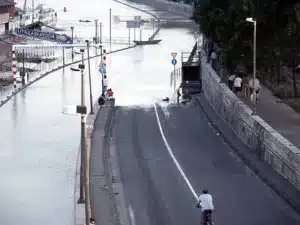
Loss of Life: Areal floods can lead to casualties when people are caught in rising waters or swept away by the current. Displacement: Many individuals and families may be forced to evacuate their homes, leading to displacement and temporary shelter needs.
Environmental Damage: Ecosystems can be adversely affected as floodwaters disrupt habitats and pollute water bodies with debris and contaminants. Economic Disruption: Businesses may suffer due to flood-related closures, impacting local economies.

Mitigation and Prevention Efforts to mitigate the impact of areal floods are critical. Here are some key strategies and measures: Improved Drainage Systems: Developing effective drainage infrastructure can help channel excess water away from populated areas. Floodplain Management: Identifying and regulating construction in flood-prone areas can reduce the risk to communities.
Early Warning Systems: Implementing advanced forecasting and warning systems can provide residents with timely information to take protective actions. Community Preparedness: Public awareness and preparedness campaigns can help individuals and communities respond effectively to flood threats.
Areal Floods in Real Life: Examples and Stories To grasp the true impact of areal floods, let’s explore a few real-life examples: The Great Flood of 1993 (Midwestern United States): Over several months, heavy rainfall caused extensive flooding along the Mississippi and Missouri Rivers. Thousands of homes were damaged, farmland submerged, and millions of acres were affected.
It was a testament to the long-lasting consequences of areal flooding. The 2010 Pakistan Floods: Triggered by heavy monsoon rains, this event affected more than 20 million people, inundating large parts of Pakistan. The floodwaters disrupted daily life, damaged infrastructure, and caused substantial economic losses. The Kerala Floods of 2018 (India): Kerala experienced a devastating areal flood due to an exceptionally heavy monsoon. The state saw widespread destruction, with landslides and flooding leading to numerous casualties and the displacement of thousands of people.
Areal Flood vs. Flash Flood: A Comparison It’s important to differentiate between areal floods and flash floods. While both involve flooding, they differ significantly in terms of onset and scale. Areal Flood: Areal floods develop over a more extended period, covering a vast area. They are often the result of prolonged heavy rainfall, snowmelt, or storm surges. Flash Flood: Flash floods, on the other hand, occur suddenly and with little warning. They are typically localized and caused by intense rainfall, dam breaks, or other sudden factors.
Understanding these distinctions is crucial for emergency responders, planners, and the general public to take appropriate actions when faced with flood threats. Areal floods are formidable natural events with the potential for widespread devastation. They can occur due to various factors, including heavy rainfall, snowmelt, and storm surges. Their impact on communities, the environment, and economies is significant. To mitigate the damage and protect vulnerable regions, proactive measures, improved infrastructure, and community preparedness are essential. By learning from past events and understanding the causes and consequences of areal floods, we can better prepare for and respond to these challenging situations.
Understanding Areal Floods: Nature’s Deluge Unleashed
Areal flood, the term itself conjures up images of nature’s wrath, as vast stretches of land succumb to the relentless surge of water. In this article, we will delve deep into the world of areal floods, exploring their causes, impacts, and strategies to mitigate their devastating effects.
What is an Areal Flood?
An areal flood, also known as a flash flood, is a rapid and unexpected inundation of water over a normally dry area. Unlike river floods, which develop over time, areal floods strike suddenly, leaving little time for preparation. These events often occur due to intense rainfall, melting snow, or the breaching of dams or levees.
The Anatomy of Areal Floods
To truly comprehend the magnitude of areal floods, let’s break down their components:
1. Rainfall Intensity
The primary trigger for areal floods is an exceptional downpour. When precipitation rates exceed the capacity of the land to absorb it, water accumulates rapidly, leading to inundation. The relentless force of the raindrops can wash away soil, trees, and even buildings.
2. Topography Matters
The geography of an area plays a significant role in areal flood development. Low-lying regions and areas with poor drainage systems are more susceptible to flooding. Urbanization, with its concrete jungles and reduced natural drainage, exacerbates this vulnerability.
3. Human Influence
Human activities, such as deforestation and urban development, can alter the landscape and increase the risk of areal floods. The removal of trees and vegetation reduces the land’s ability to absorb rainwater, leading to increased runoff.
The Aftermath: Impacts of Areal Floods
Areal floods bring a wave of destruction in their wake, affecting both the environment and communities. Some of the far-reaching impacts include:
1. Loss of Life and Property
Perhaps the most devastating consequence of areal floods is the loss of human lives and property. Flash floods can strike without warning, leaving people with little time to evacuate. Homes, infrastructure, and livelihoods are often washed away in the deluge.
2. Environmental Damage
The ecological balance of an area is disrupted when areal floods occur. Erosion and sedimentation damage water bodies, harming aquatic life. The floodwaters can also carry pollutants, contaminating water sources and further endangering ecosystems.
3. Economic Fallout
The financial toll of areal floods is immense. Repairing infrastructure, compensating affected individuals, and the loss of productivity in flood-hit regions all contribute to a substantial economic burden.
Mitigating Areal Floods: A Ray of Hope
While areal floods are unpredictable, there are measures that can be taken to reduce their impact and help communities better prepare:
1. Early Warning Systems
The development of robust early warning systems is crucial in mitigating the impact of flash floods. Timely alerts can give residents the precious minutes needed to evacuate to safer ground.
2. Improved Drainage
Investing in better drainage infrastructure in urban areas can help channel excess water away from vulnerable regions. This includes building retention ponds, widening culverts, and maintaining natural waterways.
3. Reforestation Efforts
Restoring natural vegetation can increase the land’s capacity to absorb water, reducing runoff and the risk of areal floods. Conservation programs and afforestation initiatives can make a significant difference. Areal floods are not limited to a particular region; they are a global challenge. From the arid deserts of Arizona to the lush plains of Bangladesh, no area is entirely immune to the threat of flash floods.
It is essential for communities worldwide to come together and develop strategies to mitigate this natural disaster. Mega areal floods are catastrophic events characterized by an extensive inundation of large areas of land due to intense and sustained rainfall or other contributing factors. These events can result in widespread devastation and significant loss of life and property. Here is a list of some historical mega areal floods from around the world:
- Great Flood of 1931 (China): The 1931 Yangtze River flood in China is one of the deadliest natural disasters in recorded history. It affected millions of people, causing widespread flooding and leading to an estimated 1 to 4 million casualties.

- Central European Floods (2002): In August 2002, several countries in Central Europe, including Germany, Austria, and the Czech Republic, experienced extensive flooding due to heavy rainfall. This event resulted in significant damage to infrastructure and loss of life.

Pakistan Floods (2010): The 2010 floods in Pakistan were caused by a combination of heavy monsoon rains and the melting of Himalayan glaciers. Approximately one-fifth of Pakistan’s total land area was submerged, affecting millions of people and causing widespread destruction.

- Flooding in Kerala (2018): Kerala, a state in southern India, witnessed devastating floods in 2018 due to exceptionally heavy rainfall during the monsoon season. It resulted in extensive flooding, displacement of people, and loss of life and property.
- Hurricane Harvey (2017): While primarily known for its hurricane impact, Harvey also caused a massive areal flood in the Houston, Texas area. The hurricane’s slow movement resulted in record-breaking rainfall and catastrophic flooding.
- Flooding in Bangladesh (1987 and 1988): Bangladesh is prone to annual flooding during the monsoon season, but the 1987 floods were particularly severe. Millions were affected, and large areas of farmland were submerged.
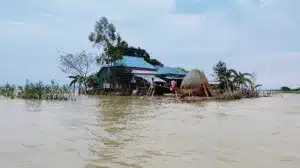
Mississippi River Great Flood (1927): The 1927 Great Mississippi Flood in the United States resulted from heavy rainfall and the failure of levees along the Mississippi River. It caused widespread devastation across several states, displacing hundreds of thousands of people.

European Floods (2013): In 2013, several European countries, including Germany, Austria, Hungary, and the Czech Republic, experienced significant flooding due to heavy rains. It resulted in widespread damage and evacuations.
- Flooding in Mozambique (2000): Flooding in Mozambique in the year 2000 was caused by heavy rains and the overflow of the Limpopo and Save rivers. It affected hundreds of thousands of people and resulted in substantial economic losses.
- Flooding in New Orleans (2005): Hurricane Katrina made landfall in the United States in 2005, causing severe flooding in New Orleans, Louisiana. The failure of levees and inadequate infrastructure exacerbated the disaster.
Conclusion
In conclusion, areal floods are a powerful force of nature that demands our respect and preparedness. Understanding their causes and impacts is the first step towards effective mitigation. By investing in early warning systems, improving drainage, and fostering reforestation efforts, we can reduce the devastation caused by these unpredictable events. Let’s work together to protect our communities and our planet from the deluge of areal floods.

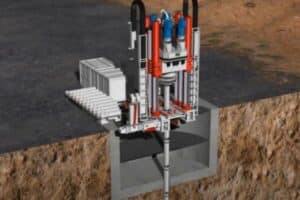

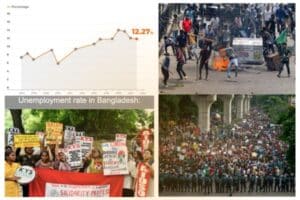
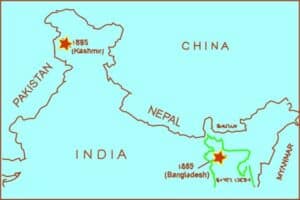
More Stories
10 Devastating Flood
The Mysterious Phenomenon of Mud Flood
Jakarta Flood 2020